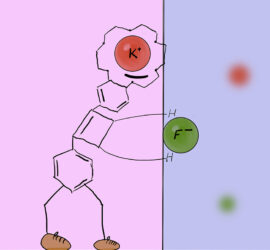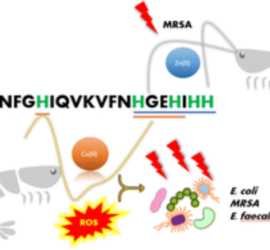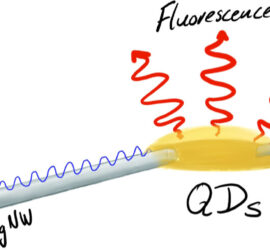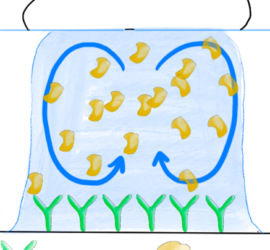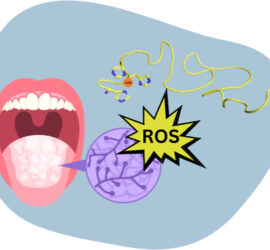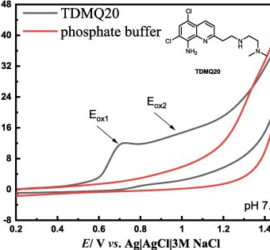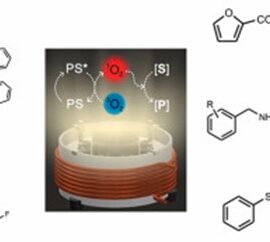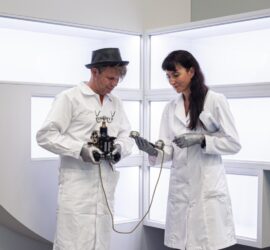We are happy that we just published a new paper in a special issue of the Journal of Solid State Electrochemistry dedicated to the 60th birthday of Prof. Frank Marken from the University of Bath. The special issue is edited by Frank’s former supervisor, the legendary Prof. Richard G. Compton, […]
collaborations
In a recently published paper in Electrochimica Acta, Julia presents the results of her investigations of two new squaramide-based ion-pair receptors for ion transfer at a three-phase electrode. The compounds, which were synthesised by colleagues from Warsaw University had previously been used to transfer hydrophilic ions across a liquid-liquid interface, […]
Conference trips can bring new collaborations, especially when you are open to discussions and meeting new people (read scientists). At the 2nd French-Polish Chemistry Congress held in 2023, Martin heard Magdalena Rowińska-Żyrek give a talk on the antimicrobial properties of Zn- and Cu-complexes with peptides from shrimp and this meeting […]
The year started with the publication of an article in J. Phys. Chem. C on propagating plasmons in silver nanowires. This work in yet another in the series of articles on silver nanostructures and plasmons run by our neighbours in the Surface Nanoengineering group and the Maćkowski group in Toruń. In this work, it was […]
In the latest round of announcements from NCN we were delighted that Martin’s Opus application for creating new biosensors based on peptides was selected for financing. This project was written and will be executed in collaboration with Dr Katarzyna Szot-Karpińska from our neighbours in the Surface Nanoengineering Group. The scientific […]
Peptides is Magda’s favourite topic. So far, she has mainly focused on beta-amyloids. However, in cooperation established with the University of Wroclaw she has had the opportunity to study a new group of peptides. In our new article published with Joanna Wątły’s group this is motivated by “[t]he necessity to […]
Collaboration is extremely important to us. Gaining new knowledge, both practical and theoretical, is also extremely important. For this reason, Magda went on a 6-month internship to Professor Alvaro Colina’s group in Burgos, Spain. The cooperation turned out to be very successful because shortly after her return our first article […]
Magda once again cooperated with the Warsaw University of Technology (prof. Tomasz Kliś). As part of this cooperation, a new article entitled was published in Dyes and Pigments. The group from WUT obtained 5 boron-containing dyes. These substances were tested as photosensitizers for singlet oxygen activation. Among the studied compounds, […]
During the summer, our institute published a press note about our recent publication in ACS Sensors about a smartphone-based sensor for CRP. The press note is written by the fantastic scientist and science populariser Dr Magdalena Osiał, with photos by Grzegorz Krzyżewski. Unfortunately, Meen could not be included in the […]
In a follow-up from our previous paper on point-of-care sensors for C-reactive protein (CRP), an article based on the same principle was just published in ACS Sensors. There are two main differences: instead of a peptide as recognition element, we used a nanobody, and we used a new smartphone-based potentionstat. […]


